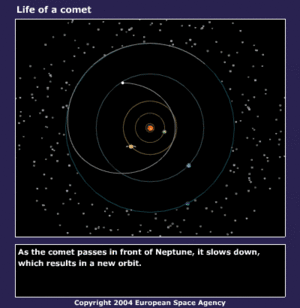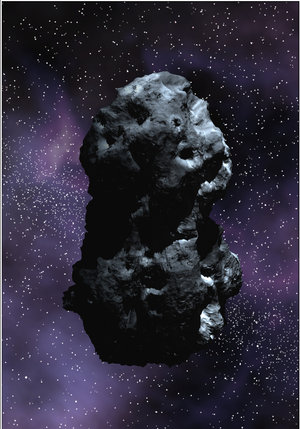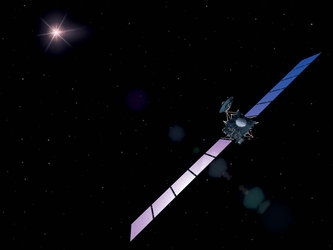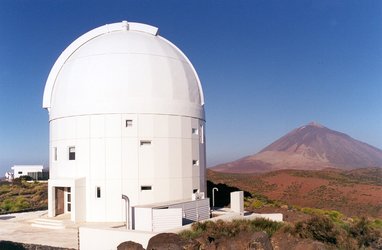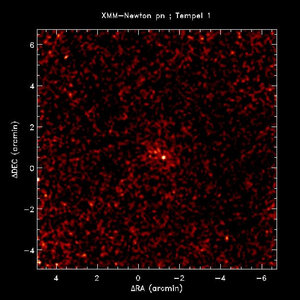Highlights from ESA, ESO and NASA missions
Characteristics
Tempel 1 is a short-period comet, meaning that it moves around the Sun in an elliptical orbit between the planets Mars and Jupiter in a relatively short time. It was the ninth periodic comet to be recognised as such, hence the 9P.
The comet has made many passages through the inner Solar System, which makes it a good target to study evolutionary changes in the ‘mantle’, or upper crust.
Tempel 1’s orbit lies between the orbits of Mars and Jupiter. The orbit of the comet has varied in the past and will change in the future because of close approaches with the planet Jupiter. When it was discovered, the period was 5.68 years, now it is about 5.5 years
While we can calculate the orbital parameters, determining the size and shape of the nucleus has been difficult because we can't see the nucleus. However, based on a variety of observations, we believe the nucleus is roughly 14.4 by 4.4 kilometres in size, more elongated than spherical.

Earth-based observations indicate it makes one full rotation about its axis every 41 hours. It has mass somewhere between 10 000 and 250 000 million tons, and a density of probably between 300 and 900 kilograms per cubic metre (between 3/10 and 9/10 the density of water on Earth).
In fact, we've only seen the nuclei for three comets - Halley, Borrelly and Wild 2. In July 2005, we hope to add to this small collection with a very detailed view of the nucleus of Tempel 1!
For more information:
Gerhard Schwehm, ESA Rosetta Project Scientist
E-mail: gerhard.schwehm @ esa.int









